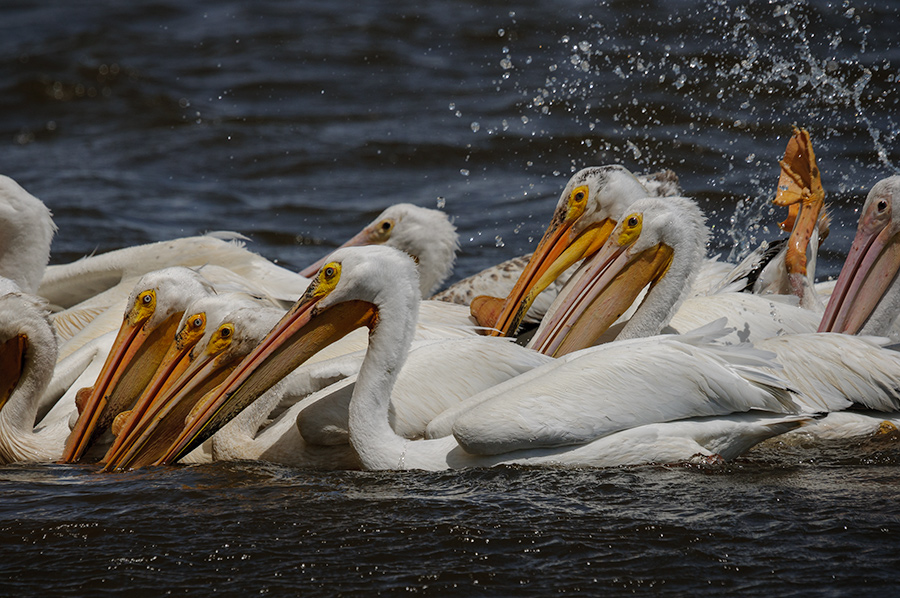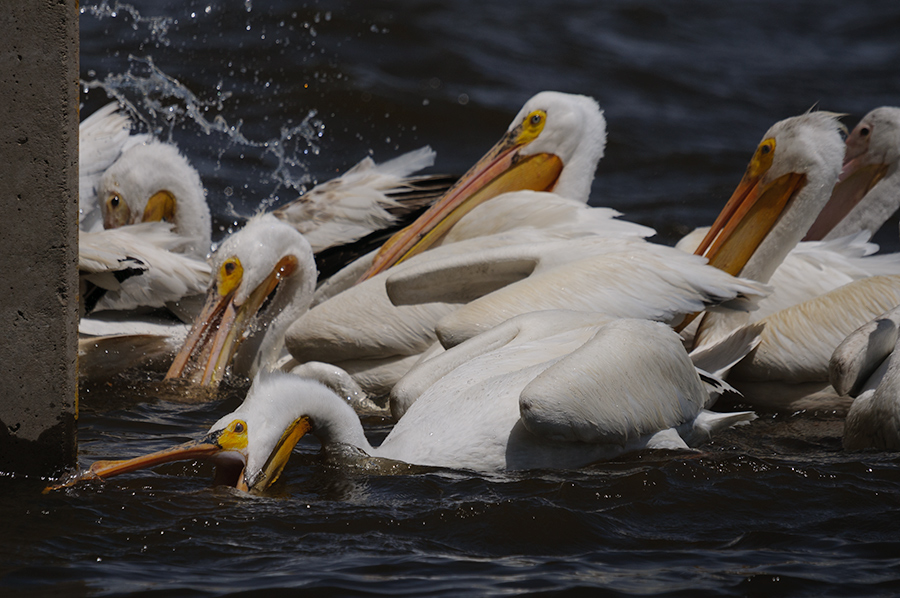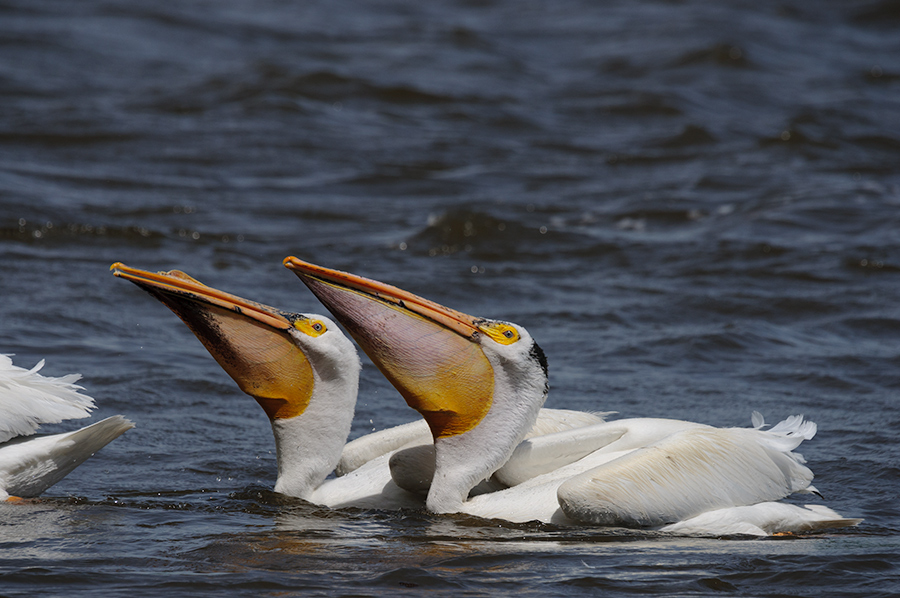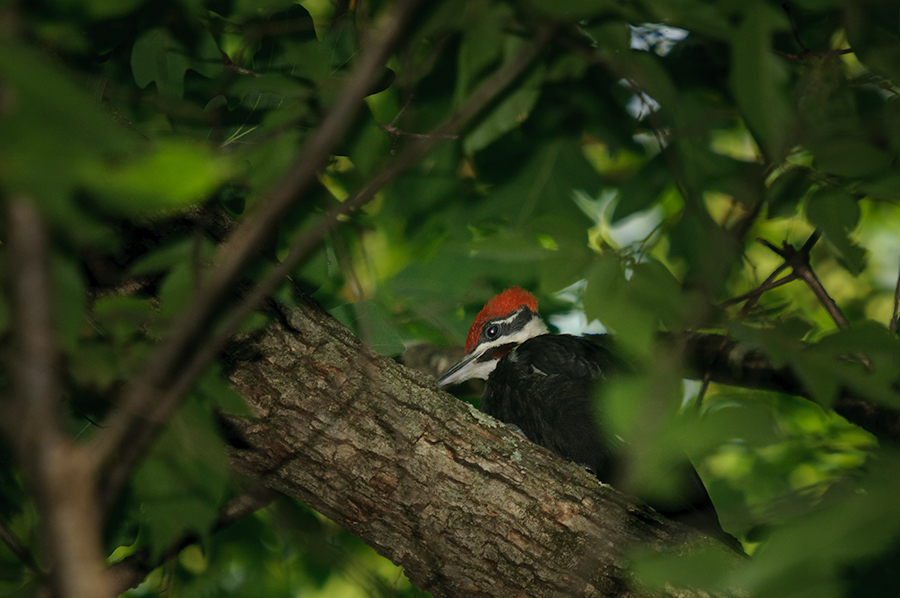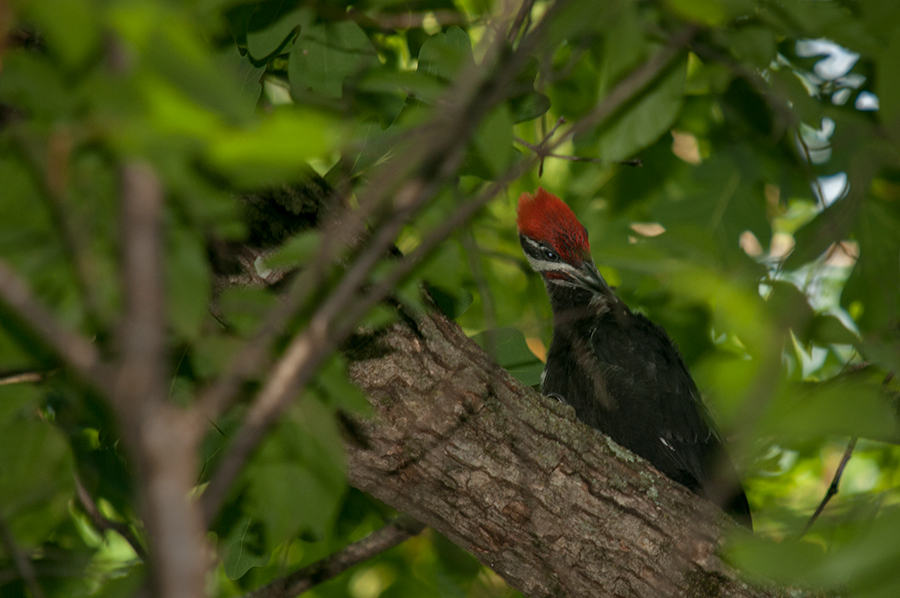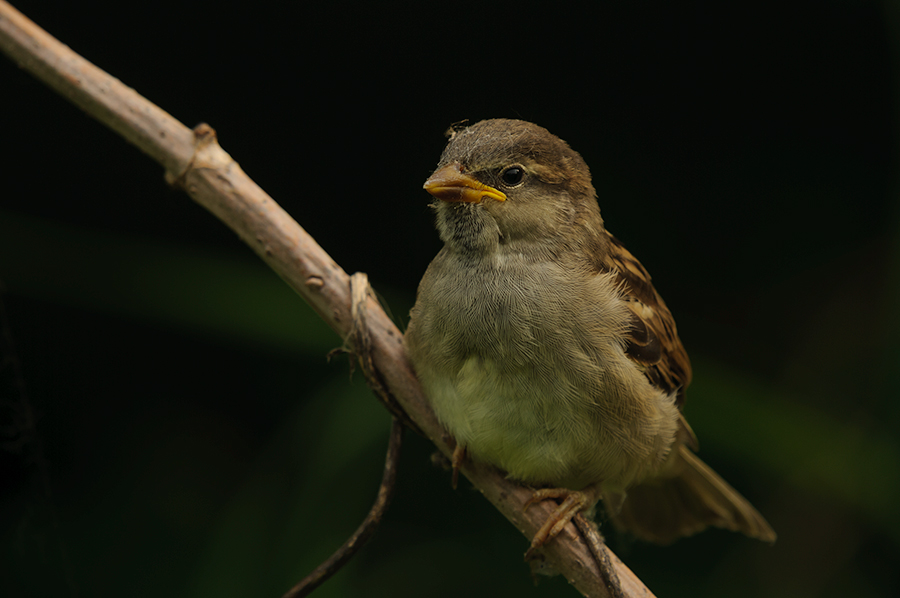
This photo is hopefully a starting point. I try to make a picture of the Belted Kingfisher since a long time. It is the most skittish bird you can imagine. I found a pair of kingfishers today at Finley’s Landing, a marina and campsite down at the Mississippi River. I had no chance to get closer for this shot, there was water between me and the dead tree where the male kingfisher was perched. It is not so difficult to find them. Often you can hear their loud, penetrating rattle before you see them.
I know the image lacks some detail due to a heavy crop and the long distance that puts my SIGMA 50-500 to its limits. However, I’m not unhappy about the picture because it shows a typical scene, with the kingfisher high up on a perch, which is of course quite often a dead tree, and the lush green of the forest in the background. I usually have the patience to stand or sit and wait for a better opportunity but this was at 7pm and daylight was fading away quickly. I guess I have to try it again and maybe start a little earlier since the daylight time is becoming shorter again with every day…







